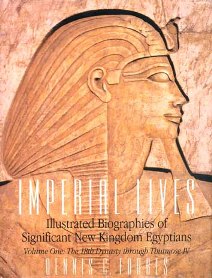
The nearly 500-year period of the ancient Egyptian empire — otherwise known as the New Kingdom (ca. 1550-1070 BC) — produced a number of fascinating individuals at the highest echelons of power, whose names and works have survived to modern times, and, in many cases, their actual physical bodies, as well. In fact, except arguably for the Caesars (those Roman emperors of the first two centuries AD), no ancient rulers are as familiar today to the educated lay person as the some three dozen pharaohs (and a few of their queens and courtiers) who governed the Land of the Nile during the apogee of the 3,000-year-long civilization of ancient Egypt.
While many of the Caesars benefited from genuine biographical accounts written in their own lifetimes, or soon thereafter, the pharaohs are really only remembered from the monuments they erected and the boastful hiero glyphic texts and formulaic relief images of themselves recorded on these now-ruined buildings — and, of course, from surviving portrait statuary or statue fragments, as well, which in almost every instance preserve an idealized (or, more correctly, “standardized”) image of the individual portrayed. Biographies in the modern sense of the word (chronological accounts of individual lives in all of their particulars) just are not possible to write for ancient Egyptians of historical note. Not enough is (or ever can be) known about those pharaonic personalities, their interpersonal relationships and the year-by-year — let alone more detailed — events in their lives. Thus, anyone attempting a “biography” of even such larger-than-life figures as Hatshepsut, Thutmose III, Amenhotep III, Akhenaten or Rameses II must be content with describing peaks rising from the Nilescape of dense fog.
No matter how many monuments, inscriptions, portraits and personal artifacts (including even actual mortal remains) have survived, the modern biographical “chronicler” is left to fill in the sometimes-quite-large gaps of hard information regarding the fifteen Early New Kingdom personalities profiled in this volume (and those individuals in the subsequent two volumes in the Imperial Lives series) with reasonable deductions and hopeful surmises, avoiding all the while the temptation to concoct “psychological” profiles for the subjects under scrutiny.

